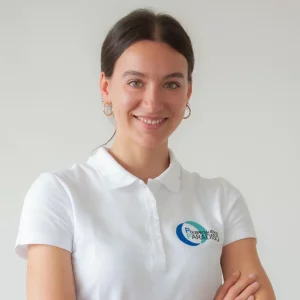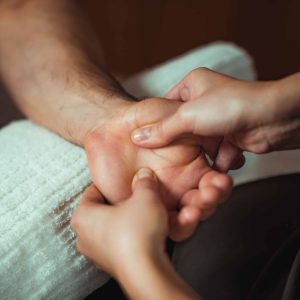How Occupational Therapy Can Help Cases of Osteoarthritis
Osteoarthritis is a chronic-degenerative condition that progresses slowly, affecting the joint cartilage and leading to its gradual wear. This condition can cause pain and functional limitations. The risk of osteoarthritis increases with age and is more common in women.
To understand the osteoarthritic process, let’s first consider a healthy joint: it consists of two bone ends that glide over each other. These are covered by cartilage, which acts as a cushion, allowing the bones to move smoothly with minimal friction. The two bone ends are enclosed by a capsule and held together by ligaments. The inner layer of this capsule is lined with the synovial membrane, which produces fluid that nourishes and lubricates the joint.
Causes and Symptoms of Osteoarthritis
Osteoarthritis causes cartilage damage and decreases its quality. The surface becomes rough, with fissures forming. Since the cartilage cannot regenerate sufficiently, it becomes progressively thinner. As a result, the joint can no longer absorb shocks effectively. The bone ends glide less smoothly, and cartilage degeneration causes inflammation and pain. Consequently, the load on the joint changes, with greater forces acting on the bones. The body naturally responds by “widening” the bone to distribute the load over a larger surface. This leads to the formation of bone spurs, called osteophytes, and cysts may also develop in the nearby bone. If the cartilage layer thins and the bone end enlarges, in some cases the joint’s alignment can also change. In the fingers, osteoarthritic changes may cause the joints to curve, sometimes visibly deforming the fingers. This is known as deforming osteoarthritis. Generally, these damages are irreversible because if lesions exceed a certain severity, neither cartilage nor bone can return to their original state. Poor posture in advanced osteoarthritis also leads to overload of the tendons and muscles that move the bones. Pain, stiffness, and reduced mobility are often the direct consequences of this condition.
The exact causes of osteoarthritis remain unknown. It is certainly the result of multiple factors. One factor is predisposition: during joint development, the quality of cartilage or the joint structure may not be optimal from the start. For finger osteoarthritis, heredity also plays an important role. Another significant factor is joint overload, for example due to physical labor, overweight, or certain sports.
Regarding the hands, the most common forms of osteoarthritis are thumb carpometacarpal osteoarthritis (rhizarthrosis), Bouchard’s nodes (proximal interphalangeal joint thickening), and Heberden’s nodes (distal interphalangeal joint thickening).
Occupational therapy intervenes in various ways in managing osteoarthritis, aiming to prevent further deterioration and/or reduce pain symptoms.
Osteoarthritis, Occupational Therapy, and Splints
An occupational therapist can provide custom-made splints if necessary, especially for the thumb, to help patients use it correctly in their daily activities. Assistive devices are often recommended after analyzing an individual’s difficulties and daily movements. These devices simplify daily tasks, help preserve affected joints, protect healthy joints, and maintain independence despite limitations. They may feature enlarged or more comfortable grips, modified levers, or altered force distribution compared to standard objects, all designed to minimize stress on small finger joints and optimize joint economy.
Occupational therapy also involves mobilization of finger joints, performed precisely and selectively to maintain joint mobility, along with fine motor and dexterity exercises to preserve these skills.
Pain-relief therapies, such as ultrasound treatments and paraffin baths, are used to warm the joint, providing comfort and relief.
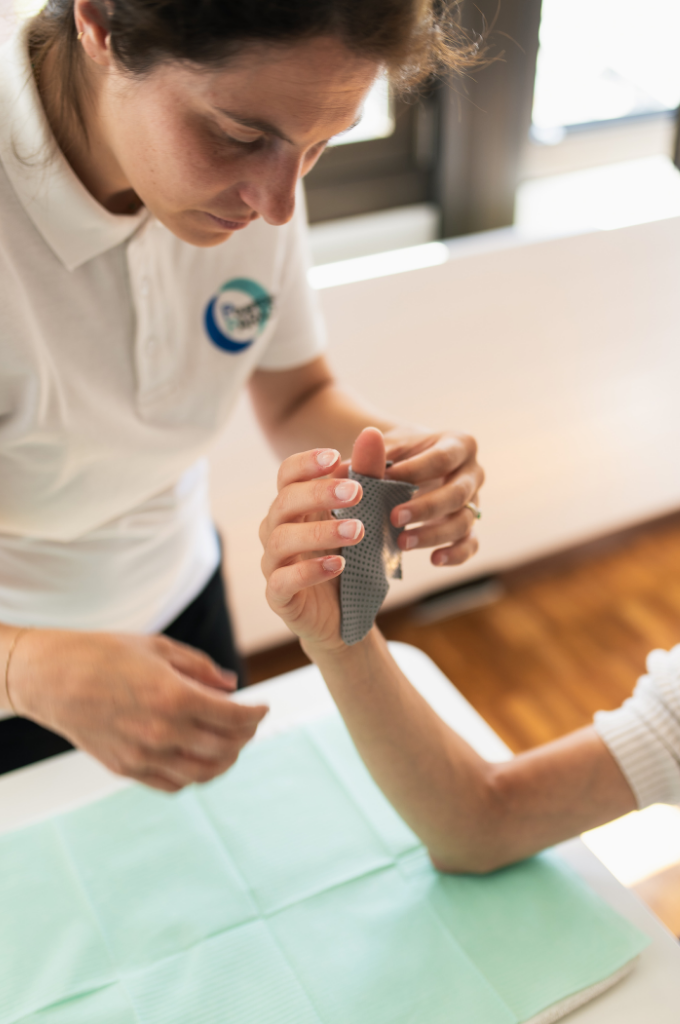
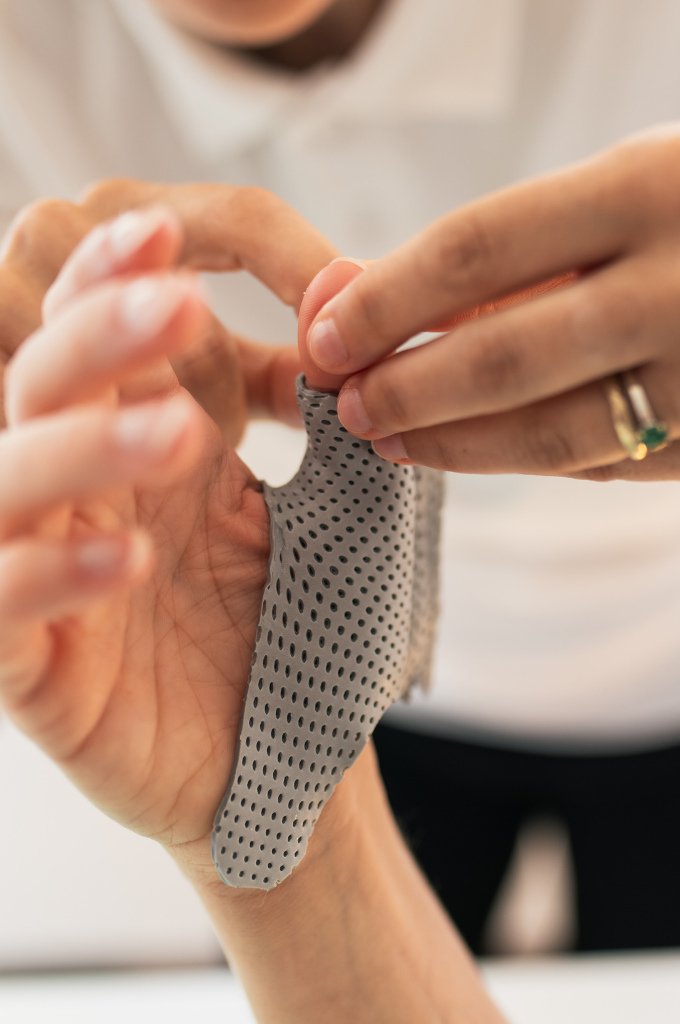
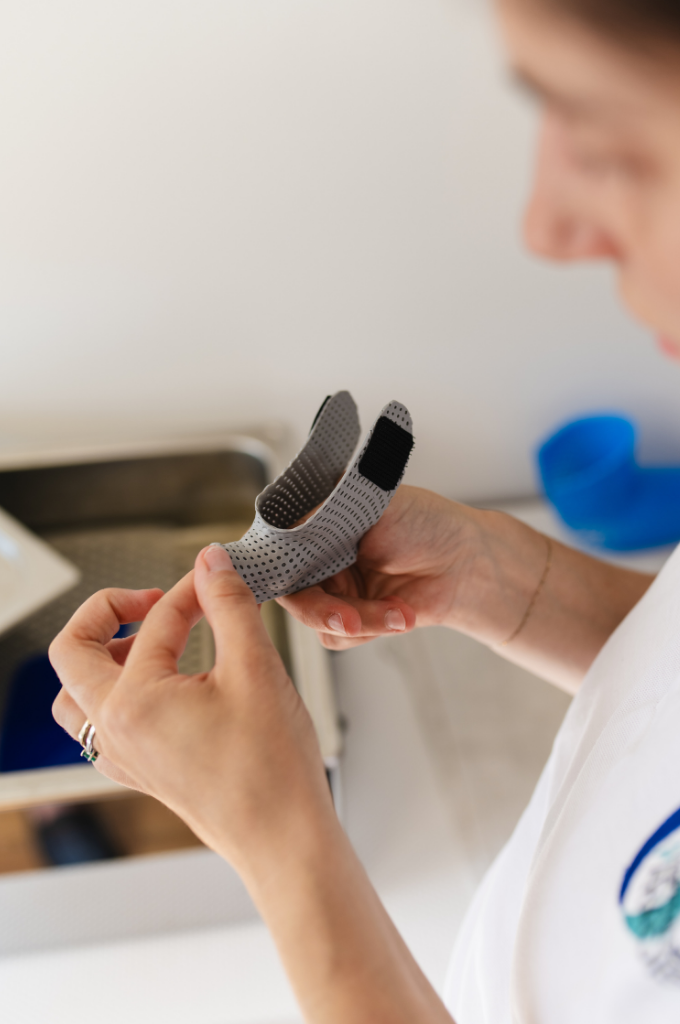
Conclusions
Other key aspects for preventing the progression of osteoarthritis include proper nutrition, under the supervision of a specialist nutritionist, and regular check-ups with a rheumatologist and/or hand surgeon, depending on individual needs.

